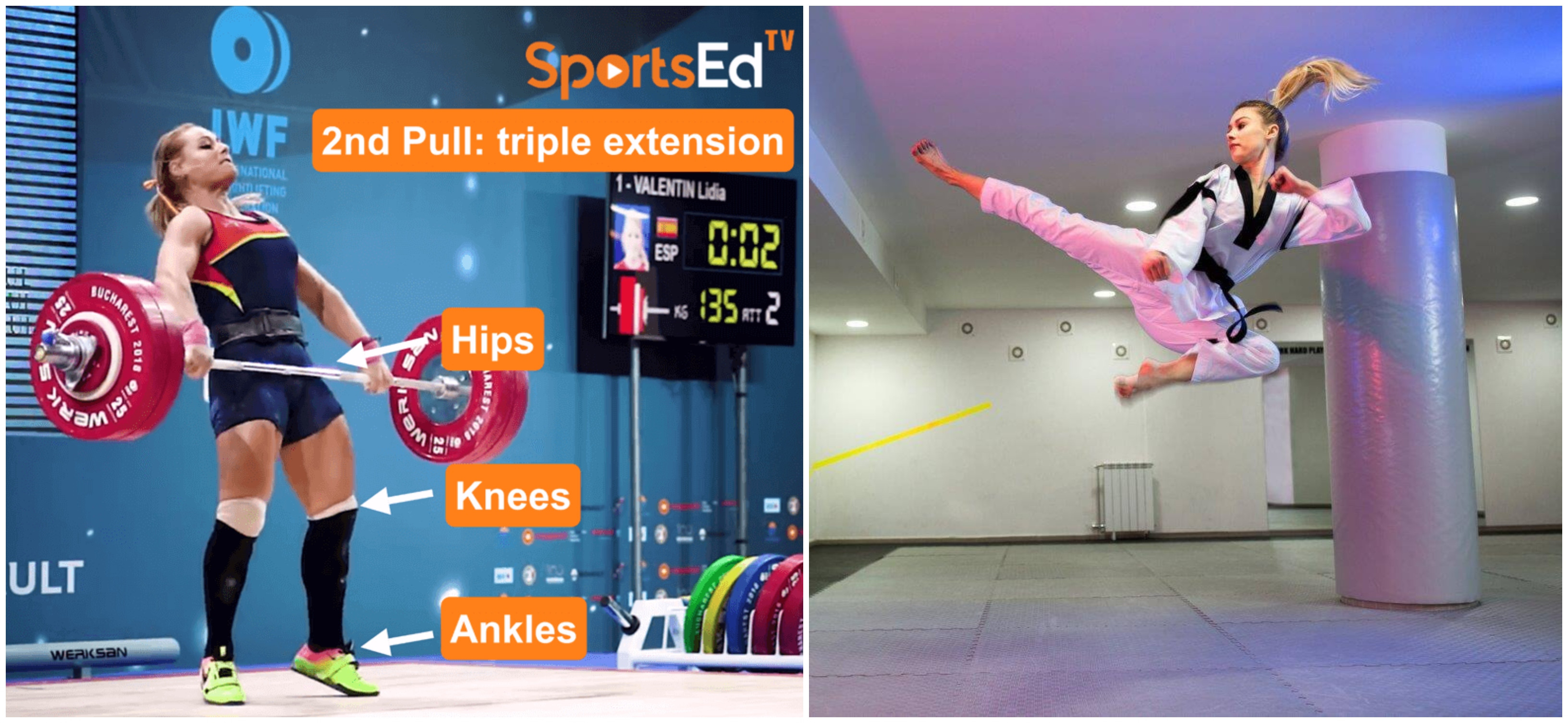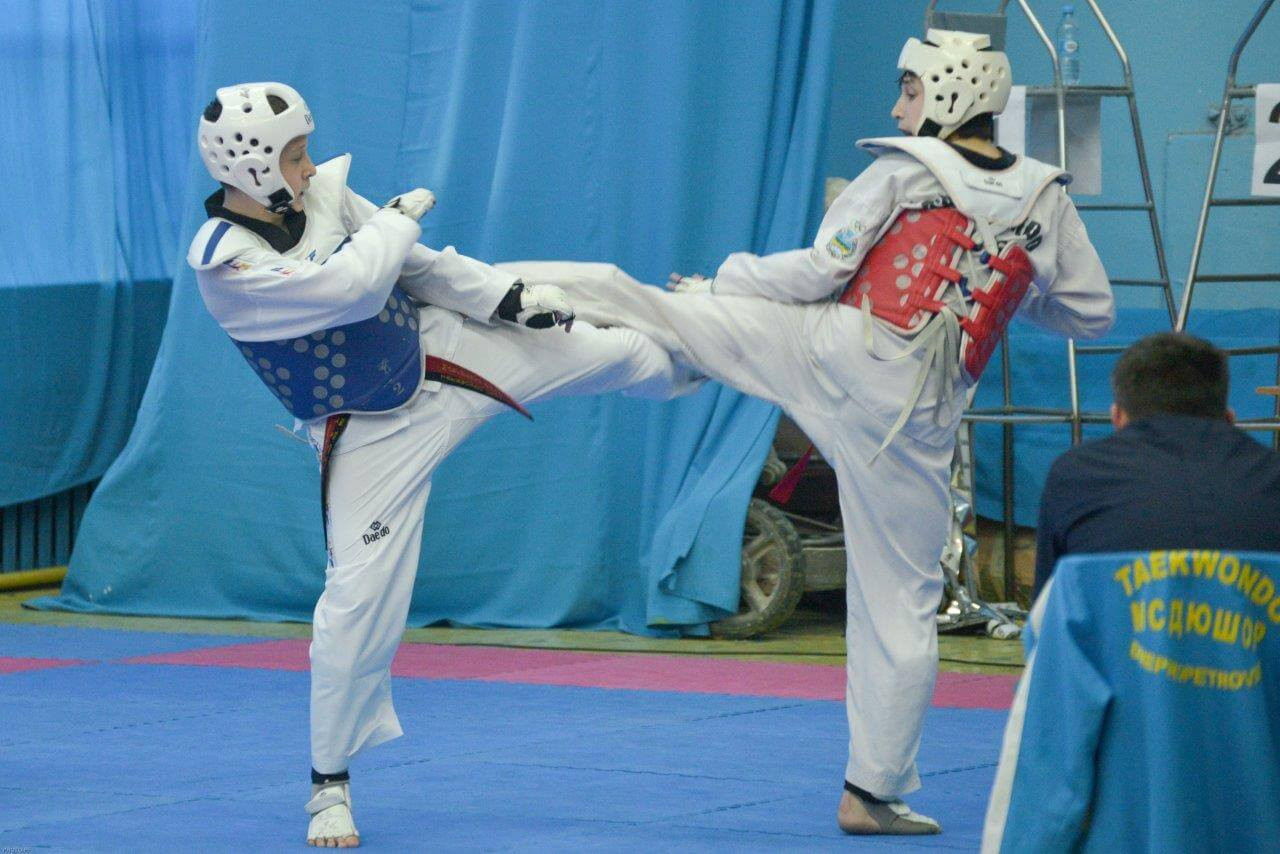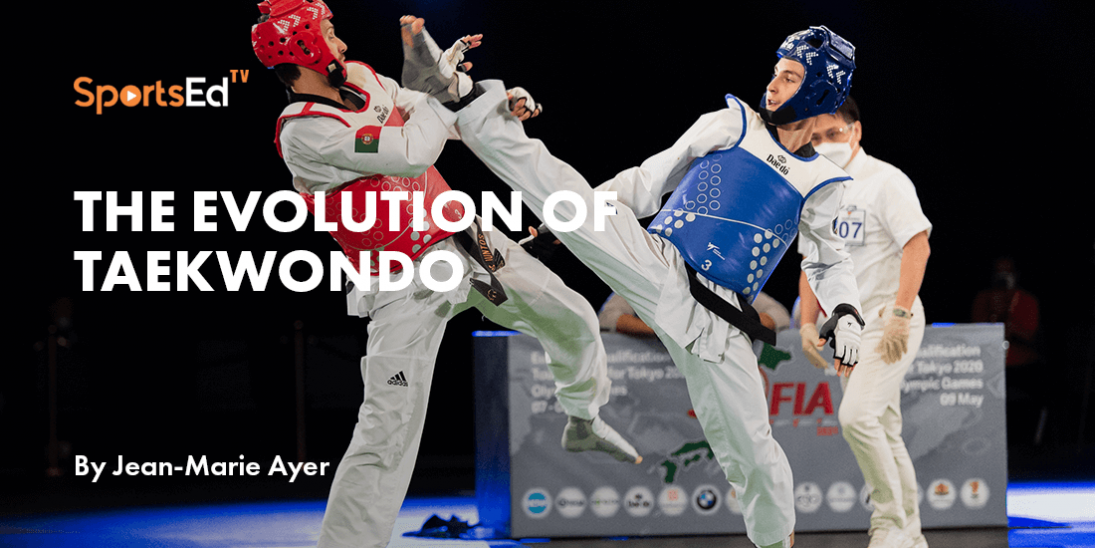Taekwondo
Welcome and thanks for visiting...

Making a Stronger, More Powerful Taekwondo Athlete

The sport of taekwondo certainly requires strength and power. But unlike much pure strength and power sports, taekwondo also demands an energy system (aerobic and anaerobic) fitness. Using a well-planned and periodized training program helps taekwondo athletes address all their physical preparation needs. The purpose of this blog is to review suggestions for improving the strength and power components of training and competing.
Well into the 21 st Century, you might expect to see the universal acceptance of the idea that competitive athletes improve performance and reduce the chance of injury by engaging in progressive resistance training. Looking back about 60 years we discover that “strength” training, actually a bit of a misnomer, began with American football. Today, athletes from all disciplines embrace this adjunct training method for better performance in their competitive environment.
So it is a bit surprising to see pockets of resistance and/or misinformation when checking “strength training and taekwondo” in an online search. Some of this relates to the old myths of weight training creating large, bulky muscles (becoming “muscle-bound”). There are misinformed statements that such training leads to bodyweight gains, concern in this weight-control sport. Needless to say, there is a great deal of confusion over basic terminology.

The Basics
Let’s examine some basic concepts related to progressive resistance training. And that, by the way, is the best overall descriptive for this topic. Resistance training includes bodyweight exercises (push-ups, dips, pull-ups, rope climb, etc.). It also includes plyometric training. It can include the use of elastic resistance. Of course, the use of external weighted loads (barbells, dumbbells, resistance machines, etc.) is also included.
Progressive means we will increase resistance as the body adapts to loads placed on it. If you start an exercise with X load (for example, 100lbs or 45kg) for Y number of repetitions (let’s say 10) you will soon get to the point where you can perform more repetitions with the same load. Your former moderate load has now become a light resistance. But a light resistance and higher repetitions do not increase strength. Although the science behind load and repetitions is not cast in stone, there are some general guidelines. For the most part, being able to only perform from one to six repetitions, or reps, before failure focuses on strength development. Performing a greater number of reps, say eight to 12, before failure requires a lighter load. Such a rep range is generally associated with bigger muscles. Using even lighter resistance and performing repetitions above 15 tends to focus on muscular (not energy system) endurance.
Weightlifters (as at the Olympic Games) and powerlifters work low repetitions in pursuit of greater strength, but they are not competitive in a physique contest. Bodybuilders, pursuing greater muscular growth, tend to work in the mid-range of reps, but this group usually does not demonstrate the strength of competitive lifters. When focusing on muscular endurance it is important to realize that this training does not increase strength or muscular bulk, so why even lift weights?
Strength vs. Power
There’s a difference between strength and power. Strength is the ability to overcome resistance. Power relates to explosive strength, or how quickly can one move a resistance. Power is the crucial ingredient in most sports, certainly in taekwondo.
Power is made up of both strength and speed. This is the reason to first get stronger, but then train to apply the increased strength in an explosive way. Your ability to perform muscular action quickly is determined by your fast-twitch muscle fiber. The amount of fast-twitch fiber is largely a result of genetics (pick your parents carefully!), so don’t expect to increase your percentage of fast- (or slow) twitch muscle tissue through specific training. You can, however, improve the qualities of the muscle typing you do have.
A muscle biopsy, often of the quadriceps muscle group, is how scientists determine fiber typing. Since a muscle biopsy is a bit complicated, to say nothing of perhaps uncomfortable, an easier field test such as the vertical jump can be employed.
With this explanation please understand that the term “powerlifting” is a misnomer. Power, or explosive strength, is most often measured in watts, or the rate of work performed. Powerlifters compete in the squat, bench press, and deadlift movements, all performed with maximum weights lifted at a relatively slow speed. This sport could be more properly named “strength” lifting.
On the other hand, weightlifting is the true “power” lifting sport, as weightlifters compete in the snatch and the clean-and-jerk, two total-body lifts that result in extreme measures of power, much greater than those involved in powerlifting. Weightlifters move lighter weights (still maximum loads for the particular lift) more quickly through a larger range of motion versus powerlifters moving much heavier weights through a shorter range of motion.
Where Should You Focus?
Resistance training may improve taekwondo performance through increased strength and/or power, greater muscular endurance, or improved body composition. Recent publications have suggested that the Olympic sport of weightlifting is the best way for taekwondo athletes to train because of the sport’s unique combination of strength and power.
Certainly, if someone is looking for a quick workout that emphasizes both strengths and power, along with taxing the entire body, a lift like the clean-and-jerk would be perfect.
However, weightlifting is an advanced form of resistance training, along with high-impact plyometric movements. An acceptable backlog of resistance training is necessary prior to attempt competitive weightlifting movements. It’s also easy to incorporate partial lifts that provide power development without having to master the complete lifts.
To master the full lifts requires a good bit of technical skill and coaching, requiring more time and effort than the average taekwondo competitor may wish to devote or can access. While it’s tempting to suppose that any non-weightlifter may produce comparable power readings, this only occurs if the non-lifter performs as efficiently as a competitive lifter.
SportsEdTV offers a great library of instruction for learning basic weightlifting technique. Also included are assistance exercises and partial movements that do not require complete mastery of that sport’s snatch or clean and jerk techniques. Gaining additional explosive strength with a minimal need for coaching should be attractive to taekwondo coaches and athletes.
The taekwondo athlete will benefit from first gaining strength through movements such as the deadlift and the squat.
After gaining additional strength it is time to focus on power development. The greatest amount of power in weightlifting movements occurs during what is called the second pull of the snatch (wide grip) or the clean (shoulder width grip). Performing only the second pull action is simple and trains lower body power (needed for jumps and kicks) without having to lift the barbell overhead (snatch) or onto the shoulders (clean). The explosive second pull for the snatch and the clean is demonstrated in the following links. Optional specialty blocks or pulling from “the hang” are both included. Check out these two easy-to-master lifts:
Note that upper body power can be gained through the use of clapping push-ups or medicine ball drills.
Recent Research
Coaches and athletes may benefit from reviewing an excellent paper in a recent paper published in Strength and Conditioning Journal entitled: Time-Motion Analysis and Physiological Responses to Taekwondo Combat in Juvenile and Adult Athletes: A Systematic Review (Vol 42, Number 2, April 2020). The authors echo the idea that taekwondo athletes need to utilize resistance training that focuses on the development of muscular force (strength) and power, as needed for effective punching and kicking. But athletes must also address energy system training in order to properly survive the repeat efforts necessary during competition and in training. Such adjunct training should be individualized based on a taekwondo athlete’s strengths and weaknesses. The paper mentions the need for adequate muscular hypertrophy and strength as a “prerequisite for power training.” This suggests a portion of training should be devoted to moderate resistance training efforts, as in bodybuilding, to prepare the muscular system for more intense efforts. The higher effort training includes ballistic movements, plyometric training, and weightlifting.
The Bottom Line
A sensible and well-thought-out resistance training program is a valuable part of an athlete’s pursuit of sporting performance. Applied correctly, a stronger, more powerful taekwondo athlete will realize improved performance and guard against injury. Numerous methods of resistance training are available; coaches and athletes should carefully consider how to best design and implement such additional training.




